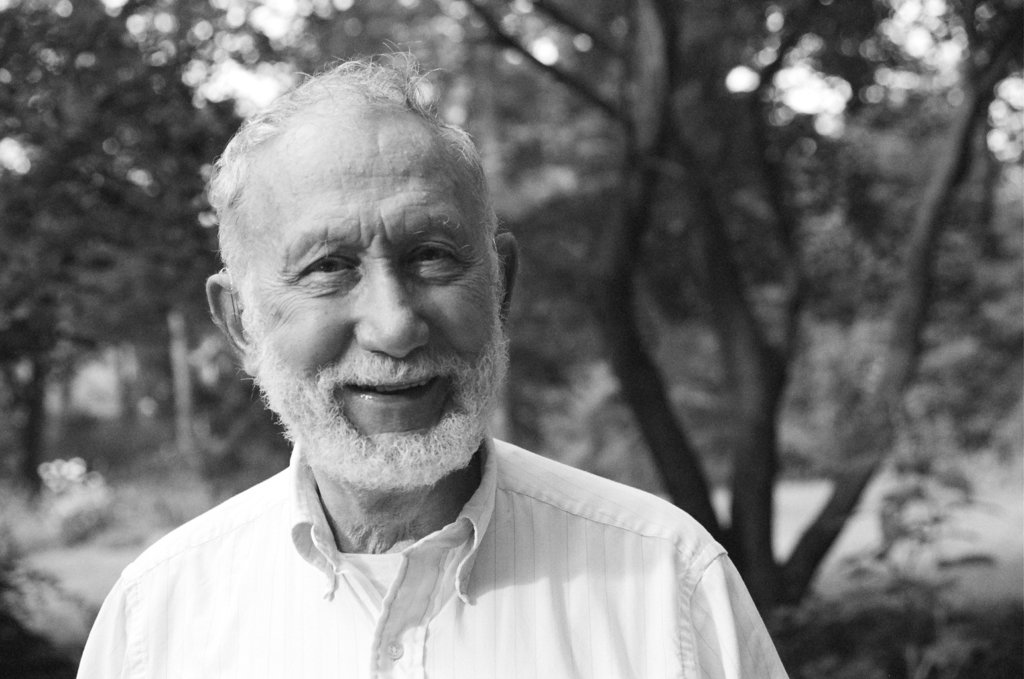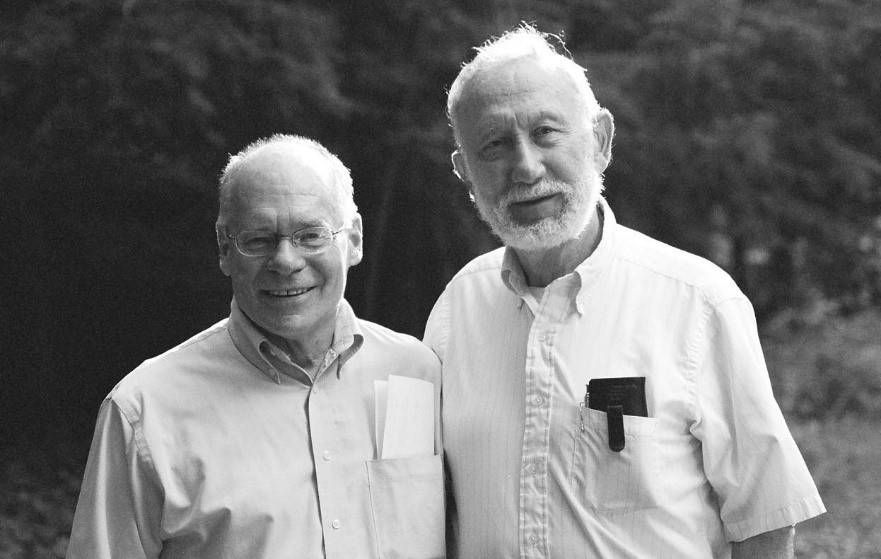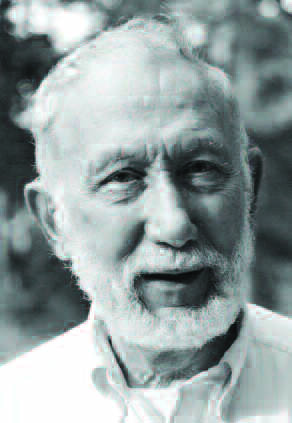Remembering Dr. Mark Ross

On April 25th, Dr. Mark Ross, one of the true pioneers in our field, passed away peacefully at the age of 94. Dr. Ross was Professor Emeritus at the University of Connecticut and has been known for decades as a visionary in the area of audiologic (re)habilitation for both children and adults with hearing loss. Well before it was in vogue to think of Audiology as a ‘helping profession’, Mark’s clinical and scholarly activities were always ‘client centered’.
When I was working in Halifax as a Pediatric Audiologist in the 1970s and trying to figure out how to fit a tsunami of rubella babies with hearing aids, I purchased the first textbook that was entirely devoted to hearing aids. Within this textbook I found a chapter by Mark Ross in which he described his unique theoretical approach to the pediatric fitting problem. This chapter was the only publication on this topic that was available at that time. Thus, with this chapter published in 1975, Mark provided our field with a significant ‘first’ that lives on to this day. As the story goes, my subsequent studies and collaboration with this ideal ‘professional father’ would lead to the eventual development of what we now know to be the DSL Method for pediatric hearing aid fitting.
There are many other important ‘firsts’ in our field that can be attributed to Dr. Ross. For example, in the early 1970s, Dr. Ross published the first research findings that quantified the benefits of FM system use by children within the classroom environment. Dr. Ross also published the first paper that defined in detail and advocated for ‘Communication Access’ for persons with hearing loss in all environments.
Through his unique approach and numerous contributions to our field, Mark changed the direction of our profession in many significant ways. For this, we must be forever grateful.

The following interview was done with Dr. Mark Ross in the Canadian Hearing Report 2019;4(1) in conversation with Marshall Chasin, Editor in Chief."

Dr. Mark Ross is professor emeritus of audiology, University of Connecticut and has served as vice president of the SHHH Board of Trustees. He writes a regular column for Hearing Loss Magazine – The Journal of the Hearing Loss Association of America, called “Developments in Research and Technology.” He has published and lectured extensively on topics dealing with hearing loss. Dr. Ross is considered one of the great pioneers of aural (re)habilitation. As an individual who has worn a hearing aid for over 50 years, Dr. Ross brings a special degree of credibility to his publications.
In conversation with Marshall Chasin, Editor-in-Chief
Marshall Chasin (MC): I know that, at least partially as a result of your military service you had a hearing loss and then went to Walter Reed for aural rehabilitation services. Is that what interested you in audiology or were you interested before hand?
Mark Ross (MR): I was in the army during WW II and then when the Korean War came along I re-enlisted in the airforce, not necessarily out of any surge of patriotism, but to get out of cutting dresses for a living. I spent four more years in the military, during which time I attended Walter Reed for hearing aids and aural rehabilitation. When my enlistment was up I was 28 years old and I needed to decide what I wanted to do with my life. I didn’t want to stay in the Air Force. I had been through this two month training program at Walter Reed, and I had learned about hearing aids and hearing loss, and I thought that I could sell hearing aids. So I started out as an undergraduate at age 28 at Brooklyn College to learn more about audiology so that I could sell more hearing aids. I tried part time for nine or 10 months going door to door trying to sell hearing aids. In that time I think I sold one hearing aid. So clearly I was not well suited to that. I used to use a Maico body aid at that time. Around that time, Zenith came out with a hearing aid that sold for $50. The Maico cost $200. I still remember this – I stopped at one house and was giving my pitch to buy a Maico hearing aid. I was asked what the difference was between the Maico hearing aid and the $50 one that was just advertised. I said that I didn’t think there was any difference, and that took care of my sales career! I had to take a lot of courses to get into audiology – I went on and did an MA and then a PhD, and here I am. There was a lot of serendipity. I started out in one thing and ended up in another. Actually as an undergraduate and graduate student, I also worked as a speech therapist with people who had various speech and language problems. Then I went to Stanford and they looked at my hearing loss, and my hearing aid, and they assumed I was interested in audiology – I thought that was fine, and went along with it.
MC: Looking back at the Vanderbilt Report in 1981, you were the first to coin the phrase “communication access” (“Communication Access”, Vanderbilt Hearing Aid Report, G. Studebaker and F. Bess (Eds.), Monographs in Contemporary Audiology, pp. 203–208) which is essentially like the wheelchair ramp for the hard of hearing. What led you to become involved with communication access?
MR: I can’t really pinpoint a specific time with adults. I started my work first with children and from that, the issue of communication access started, and from there we went to the use of FM systems and improving the signal to noise ratio. Later on, we applied the same standards of accessibility to adults. As you know, in 1964 or 1965 there was a rubella epidemic and many children who had lost their hearing as a result of maternal rubella were referred to our clinic. As a profession were we very new and not equipped to deal with this or the reactions of their parents. In Connecticut we had myself and one other audiologist in New Haven, and that was it. There was a great deal of pressure on us in the academic field to start turning out audiologists to work with these kids. And from that point there was a great expansion of audiology, particularly pediatric and educational audiology. Coming out of that we had to invent and develop skills that we just didn’t have, in order to assess children, such as counselling skills for the parents and learning to deal naturally with young children, as opposed to adults with noise induced or presbycusic hearing losses. At the same time, there was another revolution in the field of audiology and this was the psycholinguistic revolution. We began to be aware of the biological basis of language (Lennenberg, “The biological basis of language”) and natural ability of young children to learn their native language, when provided with the appropriate conditions (acoustic and experential). These works were very useful because it provided us with a formal structure to perform language based tests for hard of hearing children. Also, the early work on auditory deprivation came out. We were made aware of the need to find these kids, test them, and then to provide the best auditory signal we could, as early as we could. This led to a number of nursery schools for hard of hearing children, some of which I helped to develop. We used to fit them with binaural body aids and try to teach them language via an auditory approach. The problem was that many of these nurseries were in basements with hard walls and a lot of echoes. When the teacher spoke to me two feet away I couldn’t understand what she was saying – the acoustics of the situation made it impossible for me to understand. If it was impossible for me to understand the teacher’s language, and I’m competent in the language, how could a hearing-impaired child develop language in that kind of acoustical environment? That naturally led to my interest in improved room acoustics, and in the late 1960s when FM systems came along, I used that as well. And from there, I moved to working with adults as well and ensuring that they had not only optimal hearing aids, but everything else they needed to have communication access.
MC: What do you think audiologists should know about children (or adults) with hearing loss, but don’t?
MR: They should be learning a lot of information on speech acoustics. I sometimes find it odd that audiologists who are so concerned with the hard of hearing have such a poor grasp or awareness of the entire area of acoustic phonetics, which includes the dynamic as well as the static cues in speech that are so important for intelligibility. Haskins Lab which is still in New Haven, Connecticut, did some early wonderful work on determining which cues are important for optimal speech intelligibility and much of my early training consisted of reading and comprehending their research. Audiologists may amplify a speech signal but they don’t always consider the various cues and other spectral and temporal features necessary for optimal speech intelligibility. Also, in audiology programs now we may learn about speech perception, but we don’t concentrate enough on the reciprocal and crucial relationship between speech production and speech perception. And, of course, more information about interpersonal counselling, for parents and adults, is always welcome.
MC: Let’s talk abit about real ear measurement. There are a number of audiologists who don’t want to use real ear measurement because they don’t want to get tied up in matching a “target”. They want the ultimate fitting to be an interaction between the individual hard of hearing person and themselves without having to “stop” when a target is achieved. What is your opinion of real ear measurement?
MR: When an audiologist makes a change in my hearing aid (or an implant) and asks about whether the change is good or bad, it depends so much on my auditory memory of what I heard maybe 30 seconds before. It is difficult to make such comparisons unless they are really dramatic, which few are. If you make a rapid paired-comparison between two different settings, using the same material and the same acoustic environment, then these comparison can be done more validly. However, since we don’t have this capability at the present time, we need to rely on real ear measurements as the basis to see whether any adjustments should be made. Real ear measurement is really only saying how much audibility is available for various speech cues and frequency components for that individual in their individual ear canal. It does tend to make the assessment more objective for some things. It shouldn’t be used blindly of course, but I think that it’s an essential test. To depend on the “first fit” programming of a hearing aid and hoping that there is sufficient output and frequency response is just wishful thinking. We have a tool to verify what we think we are programming and we should be using it. We have a 2 cc coupler and this is useful but it doesn’t tell us much about what happens in someone’s ear.
MC: What do you think may be the next technical innovation in our field – the 1940s saw the development of the 2 cc coupler, the 1970s saw the development of evoked response audiometry, the 1980s real ear measurement, the 1990s otoacoustic measures, and next what?
MR: I would love to see some integrated hearing aid/FM systems no bigger than the thumb. The FM receiver should be an integral part of the hearing aid and not just an adjunct. Everyone should have this capability and everyone could point a ballpoint pen sized directional microphone across a table and would be able to listen to whatever they would like. Consider a typical wedding, where you have 8–10 people at the table, a band playing, people talking and singing. Such a mic can help you hear Uncle Ben who is sitting across the table, and ignore Aunt Sadie sitting next to him. Improving the signal to noise ratio is really the best thing that we can do to improve our ability to hear in noise, and an integrated hearing aid/FM technology with a directional microphone would be the best way to do that. It doesn’t have to be an FM system – any way of picking up the signal directly and reducing the background noise and reverberation, would be useful. Incidentally, the first BTE FM system that was developed came out of a conversation I had at an audiology meeting in Jerusalem with Barak Dar of AVR Sonovation (the frequency transposer hearing aid). Moe Bergman sent him over to me because he wanted to get my opinion of frequency transposition. He asked about that and I told him that if he really wanted to make a difference he should build an FM/hearing aid into a BTE shell. Six months later he did just that – a transmitter that was 6 to 8 inches long and an extendable antenna built into it, and a FM/BTE with an external antenna. That was the first. From then on in, I kept advocating for smaller transmitters and receivers that had dual purposes – for example, a pen sized transmitter that was also a 2 GB digital memory stick.
MC: This last question comes from Dr. Richard Seewald who has just been appointed distinguished professor. Of all your previous students who live in Canada, who is your favourite?
MR: Ha, Ha ... As a teacher I get the most pride and a feeling of accomplishment from my students. I take special pride in Richard who has risen to such a high level and has contributed so much to the field. He came as a student, listened to some of my ideas, and went far beyond them, which is exactly what I would have wanted. He has since made some magnificent contributions and accomplishments, recognized throughout the audiological world.

